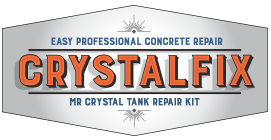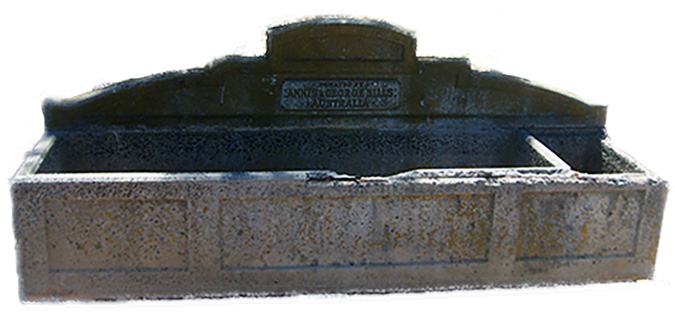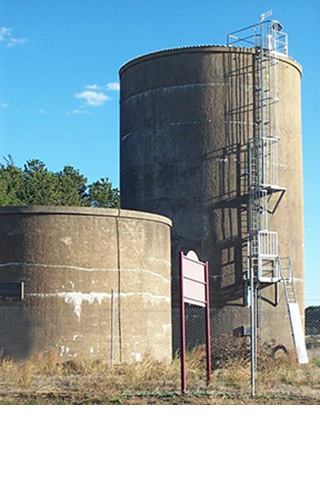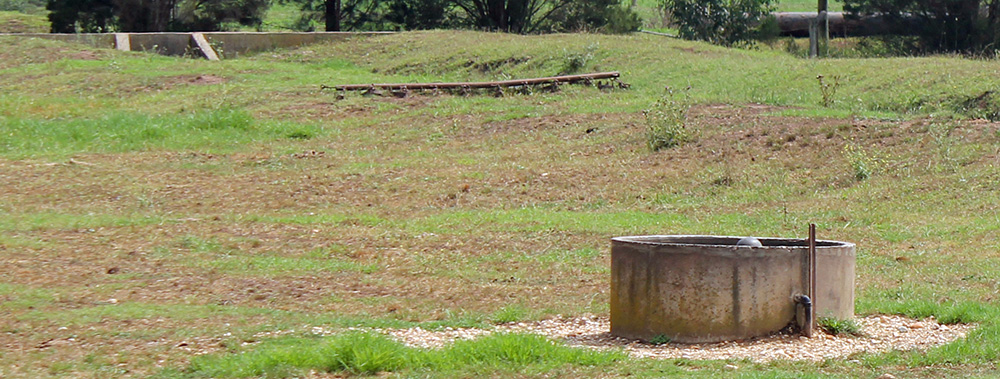We have designed and built many 1000’s of concrete structures for retaining liquids for private, agricultural, industrial and governmental departments. These include town water supplies, farm tanks, troughs, cellars, bridges and even large scale municipal saleyards (manure is a liquid). We have repaired, maintained and rehabilitated structures for 30 years using proven methods in formal controlled conditions. We have also heard some rippers! Most people start their tank stories with “I reckon”!
“I reckon throwin’ cement in the water is the go!”
When hydrated, raw cement attaches itself to adjoining particles. As it cures, these attached particles, form into a permanent unified bond. When cement is thrown into solution, each tiny particle has a chemical reaction all by itself with “nothing whatsoever” to attach with. The result – dust … mud … contaminated water. Fire ash, baby powder, flour or pepper have the same result. Better kept for the baby or the stew!
Don’t ever let a concrete tank go dry.
Many successful concrete structures are dry most of the time, such as bridges, retaining walls etc. The same goes for tanks. This tall tank tale can be traced back to the point of manufacture of cast on site tanks, often in a remote area with no or little water supply on site (thus the need for this new tank). In order to keep costs and logistics realistic, the tank builder would charge the landholder/customer with the responsibility of curing the tank……make sure you don’t let it dry out! In reality, after 28 days of hydration,concrete is considered to be fully cured and drying out is of little actual consequence.
“I reckon I’ll pour a new floor in the tank and be done with it!”
Concrete cracks to find relief from movement. Of course, it will crack at the weakest point. Obviously, the weakest point will be where the existing cracks are. It is guaranteed to crack in the same place! Save your time and money.
“Well, I reckon’ I’ll pour a real thick floor in it!”
Whether 1mm or 1 metre thick, concrete will crack at the weakest point. Save even more of your time and more of your money.
“I reckon the blokes stopped for lunch halfway through the pour!”
Maybe they did. Concrete waits for no-one. To stop without finishing the job would make it so difficult on the workers that they would probably have a heart attack trying to finish it after lunch. Having operated at the forefront of this industry for decades, we have never, ever seen it happen. The origan of this fallacy is that tanks are prone to cracking halfway up the wall as this is where the maximum leverage occurs.
“I reckon there has never been a decent concrete tank made!”
After the first world war, to create employment for returned soldiers, grants were made to build town water supplies in rural towns. These concrete tanks have successfully supplied thousands of townships with cool clean water. Despite cracks and dribbles, they continue to give excellent service with a little well designed maintenance. Concrete is an excellent choice for: design life, water quality, fire resistance, heat and light exclusion, robustness. No other commonly used structures outlasts or outperforms concrete for water storage.
“I reckon I’ll purchase a new tank!”
Most concrete tanks and troughs can be easily and cheaply rehabilitated making them fit for purpose. You have already purchased a tank that can outlast and outperform any other method of storing potable water. Save thousands on replacement and enjoy the fire resistance of concrete too..




